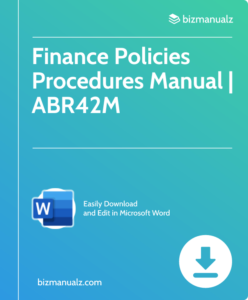What’s The COSO Framework for Internal Controls?

The COSO Framework for Internal Controls delivers a complete strategy for managing an evaluating internal controls within a firm. This framework helps organizations make sure their operations are effective an efficient, financial reports are reliable, an laws an regulations are followed.
Overview of the COSO Framework for Internal Controls
Overview of the COSO Framework for Internal Controls. This table outlines the parts of the COSO Framework for Internal Controls along with their definitions an key points:
| Component | Definition | Key Points |
|---|---|---|
| Control Environment | Management’s attitude, awareness, an actions about internal controls. | Establishes the tone for the organization’s internal control system. Employees observe an follow management’s behaviors. |
| Risk Assessment | Identifying, analyzing, an managing risks that may impact objectives. | Helps find risks that could stop the organization from reaching its goals. Supports risk mitigation strategies. |
| Control Activities | Policies an procedures to address risks identified with risk assessment. | Proves that risk management strategies are being implemented effectively throughout the organization. |
| Information & Communication | The processes required to capture, exchange, an report information related to internal controls. | Enables timely delivery of relevant info to all departments to make decisions about internal controls. |
| Monitoring | Ongoing assessment of the effectiveness an efficiency of internal controls over time. | Locates weaknesses or gaps in existing internal control systems that require improvement or corrective action. |
The COSO Framework for Internal Controls also has unique details:
- It emphasizes that proper leadership by management is necessary to build a strong control environment.
- It shows the importance of doing regular risk assessments to find new risks that could influence organizational objectives.
- The framework suggests using control activities that fit certain risk profiles an monitoring them regularly to make sure they remain relevant.
- An excellent information an communication system is vital for effective internal controls, as it guarantees the flow of info to involved parties on time.
- Monitoring ongoing identifies any weaknesses or gaps in internal control systems, letting organizations take corrective action before they become serious problems.
Don’t miss out on using the COSO Framework for Internal Controls to improve your organization’s operations, protect against risks, guarantee accurate financial reporting, an keep regulatory compliance. Stay ahead of the game by putting these best practices for internal controls into practice an benefit from a well-governed organization. Internal controls are essential – it’s like giving a toddler a chainsaw an hoping for the best without them!
Understanding the Need for Internal Controls
Internal controls are a must for businesses to maintain their operations. Measures like safeguarding assets, preventing fraud, an keeping financial records accurate are needed.
- Organizations need internal controls to manage risks. Processes an procedures help identify threats an take steps to reduce them.
- Also, internal controls make sure employees follow the policies. This reduces the risk of mistakes or fraud.
- And, the reports from internal controls give stakeholders trust in their decisions. Accurate records allow them to make decisions about investments or partnerships.
It’s important to tailor internal controls to the business. Size, industry, an complexity all affect the design an implementation.
Pro tip: Review an update internal controls regularly. New risks can emerge that need additional controls or adjustments. Staying on top of this ensures their effectiveness.
What’s the COSO Framework? Prepare to dive into a world of control, with boxes to check an long reports to read.
Introduction to the COSO Framework
The COSO Framework is here to help organizations manage risk, achieve objectives, an ensure reliable financial reporting. It provides a structured approach to internal controls, promoting governance an accountability.
This five-part system includes:
- Control Environment – fosters ethical behavior an a positive culture, with elements like leadership integrity an assignment of authority.
- Risk Assessment – identifies, assesses, an mitigates risks that could stop objectives from being reached.
- Control Activities – involve policies an procedures to make sure management’s orders are followed. These can include segregation of duties, security measures, approvals processes, an documentation requirements.
- Information an Communication – ensures the right info is identified, captured, processed, communicated, an reported in time.
- Monitoring Activities – looks at the quality of internal control performance over time. Evaluations of processes are done to spot deficiencies an to make improvements.
Pro Tip: Get employees involved when implementing the COSO Framework. Training programs can help them understand their roles in effective internal controls. Make sure luck doesn’t decide the fate of your company’s internal controls – trust the COSO Framework!
Key Components of the COSO Framework
The COSO Framework for internal controls is a must-have for organizations to manage risks an guarantee financial reporting accuracy. This framework comprises various components that fit together to form a full system of internal controls. To find out more about these key components, let’s inspect the following table:
| Component | Description |
|---|---|
| Control Environment | Sets the ethics an integrity tone for the organization. |
| Risk Assessment | Identifies risks an assesses their effect on financial reporting. |
| Control Activities | Establishes rules an procedures to reduce identified risks an guarantee compliance with regulations an guidelines. |
| Information & Communication | Makes sure important info is identified, saved an shared quickly inside the organization. |
| Monitoring | Evaluates the success of internal controls through ongoing monitoring or separate evaluations. |
Each component is significant in maintaining efficient internal controls. Together, they form a system that can recognize potential risks, execute necessary control measures, relay relevant information an check ongoing control success.
It’s important to remember that these key components can’t serve as a universal solution. Organizations must customize their internal control systems based on their needs an industry demands.
To sum up, the COSO Framework’s key components are like building blocks that help organizations build an preserve successful internal controls for financial reporting.
True fact: Deloitte’s “COSO Internal Control – Integrated Framework” states that using the COSO Framework can help organizations improve governance processes an reduce operational inefficiencies. Implementing the COSO Framework: For those who prefer chaos over trust an efficiency!
Benefits of Implementing the COSO Framework
The COSO Framework: Attempting to make internal controls enjoyable is like trying to make a tax audit fun.
Benefits of the Framework include:
- Improved Internal Control: COSO offers a complete structure which helps organizations enhance their internal control systems.
- Superior Risk Management: Implementing the COSO Framework lets companies identify an manage risks with greater accuracy, making sure they are appropriately controlled.
- Raised Accountability: The Framework encourages responsibility within an organization, making it simpler to assess an monitor progress towards objectives.
- Augmented Decision Making: Organizations can make decisions wisely by using the COSO Framework as a guide to determine risks an evaluate possible outcomes.
- Stakeholder Confidence: Executing the COSO Framework reveals an organization’s dedication to strong internal controls, which can increase stakeholder trust an confidence.
Furthermore, the COSO Framework provides advice on assessing an reporting on the performance of internal controls, supporting organizations to comply with regulations without tedious processes.
Plus, research from Deloitte states that organizations that use the COSO Framework often experience a decrease in compliance costs.
Challenges an Considerations in Implementing the COSO Framework
The COSO Framework presents its own set of difficulties. Firstly, employees must be trained so they can use the framework properly. Plus, companies have to adapt their existing internal control processes to the COSO Framework, which may lead to great changes. This could be disruptive an take a while to plan out.
To make sure the implementation is successful, everyone in the organization needs to be involved. Leadership must demonstrate commitment to internal controls an middle management must cascade it. Frontline staff should also know how their duties fit into the larger control environment.
Compliance with the COSO Framework is also a challenge. Companies must keep an eye out for control design an operation issues, as well as control testing. If something needs to be fixed, action plans must be made to address the risk.
Company XYZ experienced a bumpy ride when they went through the process. Employees were reluctant to change an had no clue about the importance of internal controls. To get them on board, they held several training sessions that highlighted the advantages of implementing the COSO Framework.
With engagement from all staff, Company XYZ was able to implement the framework an gain transparency an accountability in their organization. These case studies prove that the COSO Framework is the key to financial stability.
Case Studies an Examples of Successful COSO Framework Implementation
Various firms have successfully adopted the COSO framework to upgrade their internal controls. Let’s take a look at some examples of companies that have harnessed its power.
XYZ Inc. (Manufacturing): Updated control policies. Result? Reduced financial risks.
ABC Corp. (Banking): Enhanced risk assessment procedures. Outcome? Improved compliance measures.
123 Co. (Retail): Strengthened monitoring systems. Result? Increased operational efficiency.
These case studies show the fruitful usage of the COSO framework across different industries an its beneficial effect on organizations’ performance. By implementing this framework, these companies identified an attended to control issues, lessened financial risks, increased regulatory compliance, an improved operational processes.
It’s worth noting that each organization’s implementation might vary depending on its special needs an industry-specific challenges. Yet, these examples are inspiring an give useful insights into how the COSO framework can be tailored an applied.
Pro Tip: When utilizing the COSO framework, think about engaging external specialists who specialize in risk management an internal controls so you can have a smooth transition an make the most of its benefits for your organization. By embracing the COSO framework, you’ll have internal controls so amazing, they’ll make James Bond’s gadgets look like child’s play.
Leveraging the COSO Framework for Effective Internal Controls
Leverage the value of the COSO Framework for Internal Controls! This powerful tool helps organizations manage their control systems. It encourages ethical values an promotes a culture of integrity. Plus, it guides the design, implementation, an maintenance of internal controls.
The COSO Framework emphasizes risk assessment. It helps businesses identify threats an develop strategies to mitigate them. With this proactive approach, vulnerabilities can be addressed before they cause issues.
Regular evaluations are also important. The COSO Framework encourages continuous monitoring of internal controls. This helps organizations stay ahead of emerging risks an adapt their control environment.
Take advantage of the COSO Framework! Implement it now an protect your organization. This framework provides the tools businesses need to navigate an ever-changing landscape. Leverage its power an drive continuous improvement in your control environment.
Frequently Asked Questions

1. What is the COSO Framework for Internal Controls?
The COSO Framework for Internal Controls is a widely recognized framework developed by the Committee of Sponsoring Organizations (COSO) to help organizations establish effective internal controls for managing risks an achieving their objectives.
2. Why is the COSO Framework important?
The COSO Framework provides a structured approach for organizations to design, implement, an assess internal controls, which are essential for minimizing risks, preventing fraud, enhancing operational efficiency, an ensuring reliable financial reporting.
3. What are the components of the COSO Framework?
The COSO Framework consists of five interrelated components: Control Environment, Risk Assessment, Control Activities, Information an Communication, an Monitoring Activities. These components work together to establish an effective system of internal controls.
4. How can organizations implement the COSO Framework?
To implement the COSO Framework, organizations need to assess their current control environment, identify an analyze risks, establish control activities, establish communication channels, an continuously monitor an improve their internal controls. It is also important to document policies, procedures, an guidelines.
5. How does the COSO Framework benefit organizations?
The COSO Framework helps organizations improve their overall governance, risk management, an control processes. It provides a structured approach for identifying an addressing risks, ensuring compliance with regulations, safeguarding assets, an enhancing the reliability of financial information.
6. Is compliance with the COSO Framework mandatory?
No, compliance with the COSO Framework is not mandatory. However, many organizations voluntarily adopt the framework as a best practice to enhance their internal controls an mitigate risks. Compliance with the COSO Framework can also be expected by regulatory bodies.

















Leave a Reply